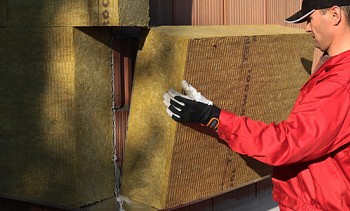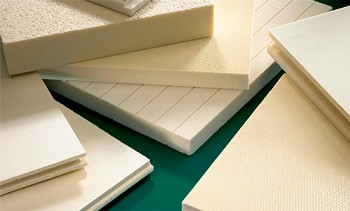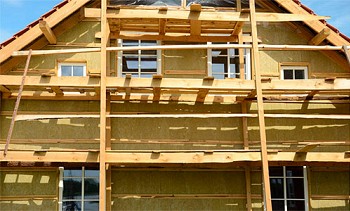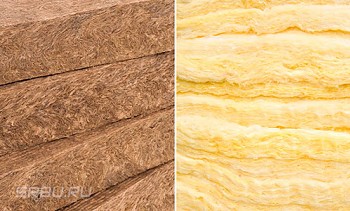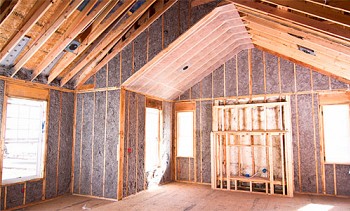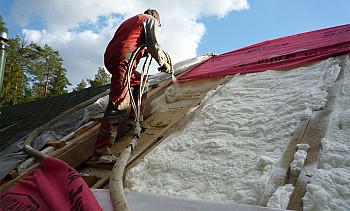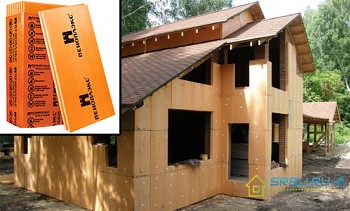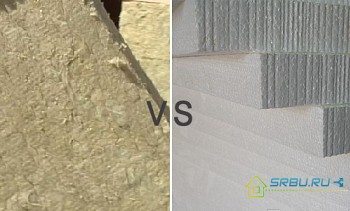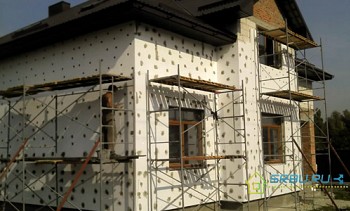Polyfoam as a heater - its advantage and scope
Of all the thermal insulation materials available in their arsenal, builders most often choose polystyrene. As a heater, foam has been used for quite a long time for thermal insulation of both large construction projects and individual construction.
Many believe that this is one of the best materials for thermal insulation of houses and other rooms. Almost every material has its pros and cons, having examined them, we will understand whether polystyrene is really the best option for warming rooms.
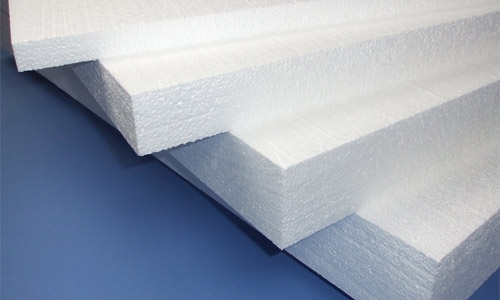
Characteristics of foam as a heater
Polyfoam is a foam mass. Styrofoam plates are characterized by their low weight, since inside it is mostly filled with air. The raw material of which the foam consists is even more dense than the starting material. The bulk of the foam consists of still air, which is a good heat insulator.
Advantages of foam as a heater
1. According to the hygienic conclusions of manufacturers and in accordance with the state standard, foam is an environmentally friendly material. It is harmless to humans, as it does not release toxic substances into the air.
2. In addition, this material has practically no expiration date, since it is not attacked by microorganisms and does not decompose. It has low thermal conductivity and is characterized by high vapor barrier properties.
3. Polyfoam is fireproof and fireproof. When the temperature in the premises changes, it does not change its physical and chemical properties. High-quality foam contains a flame retardant with self-extinguishing properties, as a result of which it does not support combustion.
4. The weight of this material is very low, and this is an additional plus, as it does not burden the structure and does not affect the shrinkage of the foundation.
5. It should be noted that this is an inexpensive material that is easily mounted in the building, and very durable.
Disadvantages of Styrofoam
With all the positive properties of the foam, it also has a number of disadvantages.
1. Polyfoam has low mechanical strength, and therefore, it is necessary to create additional protection for it.
2. In addition, it is able to collapse when nitro-paints or paints with such a composition hit it.
3. The disadvantages of the foam include the inability to let it pass air.
4. It may be susceptible to attack by rodents, so you need to cover it with a solid layer of plaster.
Wall insulation with foam
Polyfoam is a good insulation for walls. The walls are insulated with polystyrene foam, both inside and outside. But most often they produce insulation precisely from the outside. When warming from the outside, it is possible to move the largest freezing point to the outside of the wall, thereby preventing the cold from entering the room.
Produce internal insulation of walls that go outside is not correct. The fact is that the wall that goes out must be warmed up, thanks to internal heating. When laying the foam on the inner surface of the wall, the wall will be insulated on both sides, that is, the wall will not only be insulated from the outside, but also will be insulated from the inside of the room, which will prevent it from being heated by heating.
As a result, there will be a shift of the "dew point" inside the wall, or this point will be between the wall and the foam layer.In these places, moisture will accumulate and permeate the wall, in addition, this moisture can freeze in frost, that is, all this will lead to a violation of heat transfer, and the destruction of the walls will gradually occur.
Therefore, the best option is to insulate the walls from the outside, but it will be necessary to finish the foam with a layer of durable plaster on top. Polyfoam does not have increased mechanical strength, so the strengthening of the walls is necessary, for the durability of the structure.
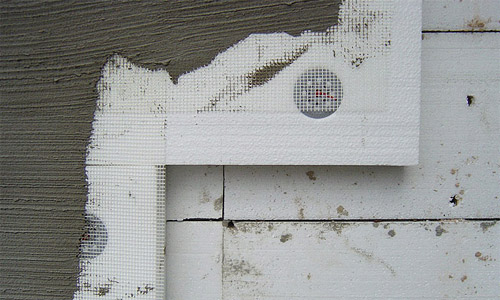
Wall insulation from the outside with foam. Photo lpinists.com.ua
Foam floor insulation
Thermal insulation of the floor is also carried out using foam boards. The use of foam for insulation of floors is a very effective method that allows you to keep floors warm and reduce noise when walking on the floor or when moving furniture. In this case, foam boards having a thickness of up to 50 mm are used for thermal insulation of the floor. They are laid on a layer of material with insulating properties. Then the seams are hermetically processed, and only then, everything is poured with a screed.
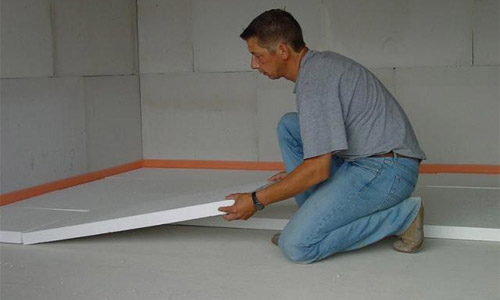
Floor insulation with foam. Photo - epsfoamprodotcom.sharepoint.com
Roof insulation
When thermal insulation of roofs in houses and buildings for various purposes, two methods are used: non-ventilated (warm roof) and ventilated (cold) roof. In the first case, when creating a non-ventilated (warm) roof, the entire roof is covered with 70 mm thick foam slabs, and the top is poured with a bitumen layer. When using the second method, foam boards are installed on the back of the roof and a ventilated surface remains to prevent the formation of water vapor. It is very important to properly insulate the roofs in the attic.
Foundation thermal insulation
Warming the foundation with polystyrene foam requires enhanced protection, since not only soil pressure occurs, but the load on the foam increases in winter during soil heaving, and this occurs during freezing. Strong reinforcement is necessary; for this, brickwork is performed or concrete is poured.
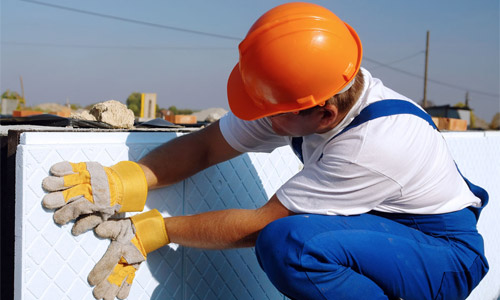
Warming the foundation with foam. Photo - plaforamaconstruye.com
Thermal insulation of engineering systems
Styrofoam began to be very often used for thermal insulation of engineering systems. For example, for the insulation of water and sewer pipes during winter freezing, the use of foam will be simply indispensable, since it will help to avoid catastrophic pipe breaks in the winter as much as possible. Polyfoam is also used for thermal insulation of cold water supply pipelines. Thermal insulation with foam and ventilation ducts, telephone lines and recessed channels.

